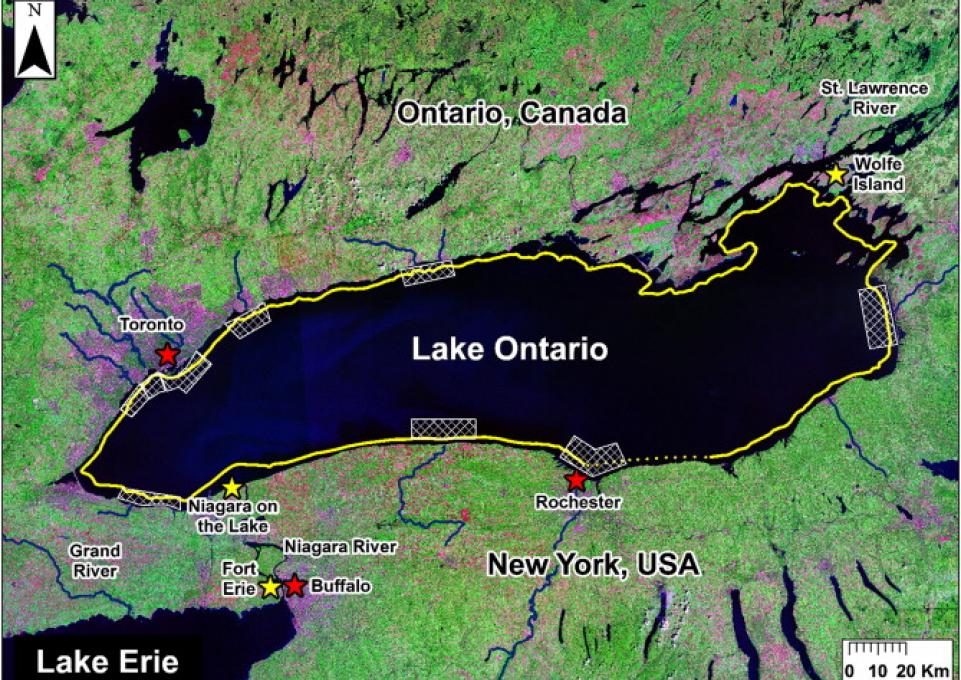
The ecological impact of both quagga mussels and round gobies on Lake Ontario could be overwhelming, according to research reported in The Lake Ontario Nearshore Zone: A Binational Study.
 Christopher Pennuto (pictured at left), biology professor and research scientist with the Great Lakes Center, is among the scientists whose findings are reported in this special issue of the Journal of Great Lakes Research. Pennuto was the lead author of “Relationships among round gobies, Dreissena mussels, and benthic algae in the south nearshore of Lake Ontario” and “Dreissena population status in nearshore Lake Ontario.”
Christopher Pennuto (pictured at left), biology professor and research scientist with the Great Lakes Center, is among the scientists whose findings are reported in this special issue of the Journal of Great Lakes Research. Pennuto was the lead author of “Relationships among round gobies, Dreissena mussels, and benthic algae in the south nearshore of Lake Ontario” and “Dreissena population status in nearshore Lake Ontario.”
The Lake Ontario issue is dedicated to the late Captain John J. Freidhoff of Buffalo State, who died in a diving accident while assisting scientists with the research described.
Researchers from Buffalo State and the College of Brockport, both of the State University of New York, and Environment Canada collected data and estimated the numbers of both freshwater mussels and round gobies. The study found what Pennuto called a “staggering number” of freshwater mussels—9.7 trillion in the Lake Ontario nearshore. “That’s enough to filter the entire nearshore volume of Lake Ontario water within a week,” said Pennuto. The number of round gobies, according to data collected by researchers in both Canada and the United States, is approximately 700 million.
Pennuto said that high-filtering efficiencies by mussels means much of the suspended plankton-sized food in the coastal waters is effectively shunted to the bottom. This reduces food for a wide range of small fishes and increases water transparency, potentially leading to more Cladophora, nuisance algae that grows on the bottom of the lake and washes onto area beaches.
“The mussels provide a hard substrate, essential to Cladophora growth,” said Pennuto. “The byproduct of quagga mussel digestion provides essential nutrients to Cladophora, and the increased light also promotes its growth.”
The abundance of round gobies on the bottom adds an additional stressor to other fishes because gobies are very effective consumers of a wide range of bottom-dwelling invertebrates. “On the bright side,” said Pennuto, “they also consume mussels of the right size.”
However, the researchers found few correlations between round goby and invasive Dreissena mussels, suggesting a low potential for the control of mussel populations by round gobies. Although mussel density seems to have declined lakewide in the last decade, little evidence supports predation by round gobies as the driving mechanism.
Pennuto said that both studies will provide data for tracking changes in invasive species numbers in Lake Ontario, as well as highlighting some of the direct and indirect impacts occurring due to the presence of invasive species in nearshore waters.
